WATCH: Tornado-like solar plasma on Sun captured by NASA
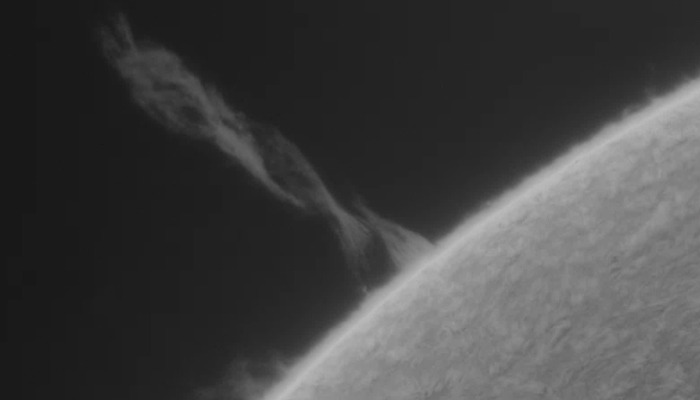
The eruption of solar plasma from the sun was captured by NASA's Solar Dynamics Observatory (SDO) on March 17, in which a swirling tornado-like movement can be seen rising.
A user shared a short video on Twitter which shows the plasma and wrote: "The tallest dust devil in the solar and system, and maybe the largest tornado ever recorded in human history. A height of around 120,000 km! Composed entirely of solar plasma, heat and magnetism. Captured today by Nasa satellite SDO aia171."
Astrophotographer Andrew McCarthy on his Twitter account told people about this amazing occurrence which would have been otherwise missed.
He wrote: "There's a "tornado" on the surface of the sun right now. Will be spending the rest of the day watching it to see what happens."
As the post surfaced, people started to speculate about possible effects it could have on Earth but McCarthy told there is nothing to be concerned about.
The plasma of hot gas mainly hydrogen and helium can be seen swirling in the video.
It appears as if a tornado is travelling vertically away from its point of origin.
"In case it needs to be said: No, this isn't going to wipe out life on Earth," he said. "This is a solar prominence and is a regular occurrence on the sun. If I saw something that was going to kill us all I'd let you know [after I was done soiling myself]."
McCarthy shared, as he came across the plasma eruption, an update the following day to note spent hours with his solar telescope observing the sight to witness the event.
NASA Sun and Space, on its Twitter also shared videos that showed several minor eruptions on the Sun.
As described by NASA, solar prominence is a "large, bright feature extending outward from the Sun's surface". Scientists do not currently know how these prominence forms but estimate that it takes a day to form.
As said by Labrosse, an astronomer at the University of Glasgow, 'the plasma mostly moves horizontally along magnetic field lines'. He added that as the line of vision is compressed, it appears like a tornado.
Massive Solar Eruption Blasts NASA Probe Head-On Before Impacting Earth
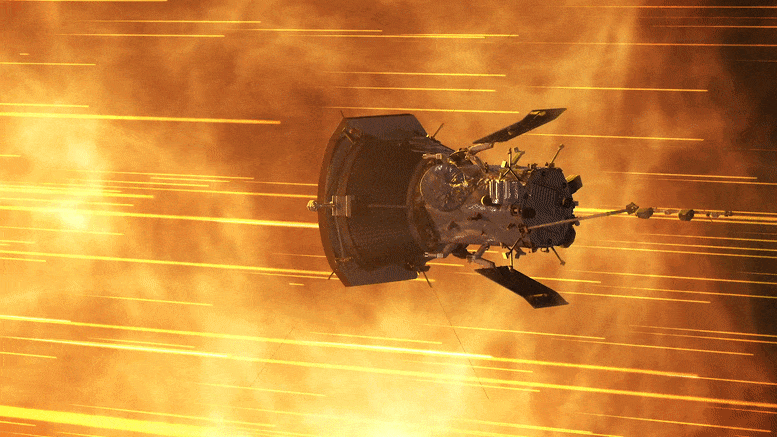
A powerful solar eruption is likely to have hit NASA’s Parker Solar Probe head-on. This artist’s animation shows the spacecraft as it officially touched the Sun. Launched in 2018 to study the Sun’s biggest mysteries, the spacecraft has close-up observations of our star. This is allowing us to see the Sun as never before, and helping scientists answer fundamental questions about the Sun. Credit: NASA GSFC/CIL/Brian Monroe
A massive eruption of solar material, known as a coronal mass ejection or CME, was detected escaping from the Sun at 11:36 p.m. EDT on March 12, 2023.
The CME erupted from the side of the Sun opposite Earth. While resarchers are still gathering data to determine the source of the eruption, it is currently believed that the CME came from former active region AR3234. This active region was on the Earth-facing side of the Sun from late February through early March, when it unleashed fifteen moderately intense M-class flares and one powerful X-class flare.
Solar flares are classified based on their X-ray energy output, measured in watts per square meter (W/m²) at the Earth’s orbit. There are three categories: C-class flares are the weakest, M-class flares are of medium strength, and X-class flares are the most powerful. Each category is ten times stronger than the previous one, meaning an M-class flare is ten times more powerful than a C-class flare, and an X-class flare is ten times more powerful than an M-class flare.
A coronal mass ejection (CME) is a massive burst of plasma and magnetic fields that is released from the Sun’s corona. These explosive events can send billions of tons of charged particles racing towards Earth, and if they collide with our planet’s magnetic field, they can cause a geomagnetic storm. These storms can interfere with satellite and radio communication systems, disrupt power grids, and cause stunning displays of the Northern and Southern Lights.
Based on an analysis by NASA’s Moon to Mars Space Weather Office, the CME was clocked in traveling at an unusually fast 2,127 kilometers (1,321 miles) per second or 7,657,000 km/h (4,758,000 mph), earning it a speed-based classification of a R (rare) type CME.
A simulation of the CME below shows the blast erupting from the Sun (located at the middle of the central white dot) and passing over Mercury (orange dot). Earth is a yellow circle located at the 3 o’clock position.
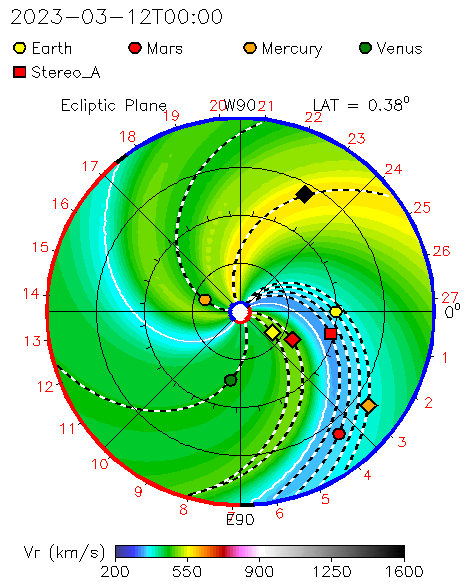
A simulation of the CME shows the blast erupting from the Sun (located at the middle of the central white dot) and passing over Mercury (orange dot). Earth is a yellow circle located at the 3 o’clock position. Credit: NASA’s M2M Space Weather Office
The eruption is likely to have hit NASA’s Parker Solar Probe head-on. The spacecraft is currently nearing its 15th closest approach of the Sun (or perihelion), flying within 5.3 million miles (8.5 million kilometers) of the Sun on March 17. On March 13, the spacecraft sent a green beacon tone showing the spacecraft is in its nominal operational mode. The scientists and engineers are awaiting the next data download from the spacecraft, which will occur after the close approach, to learn more about this CME event and any potential impacts.
The eruption is known as a halo CME because it appears to spread out evenly from the Sun in a halo, or ring, around the Sun. Halo CMEs depend on the observer’s position, occurring when the solar eruption is aligned either directly toward Earth, or as in this case, directly away from Earth. This expanding ring is apparent in the view from NASA/ESA’s Solar and Heliospheric Observatory, or SOHO, spacecraft shown below. SOHO observes the Sun from a location about 1 million miles closer to the Sun along the Sun-Earth line. In SOHO’s view, the Sun’s bright surface is blocked to reveal the much fainter solar atmosphere and erupting solar material around it. The bright dot on the lower right side of the image is Mercury.
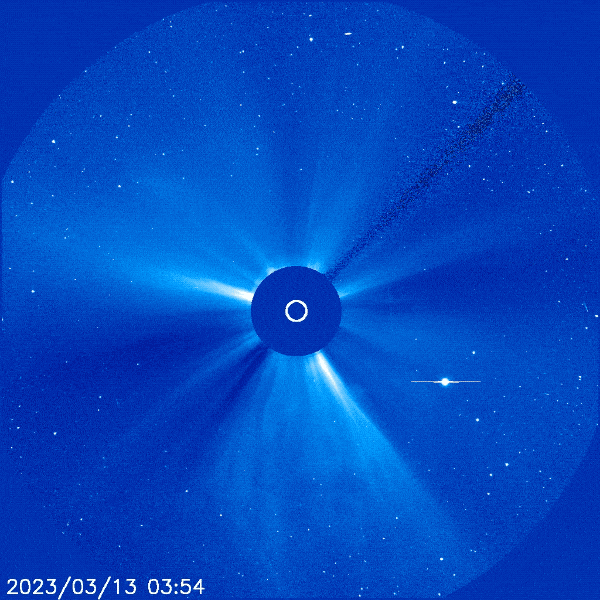
View of the CME from the Solar and Heliospheric Observatory (SOHO). Credit: NASA/ESA/SOH
Even though the CME erupted from the opposite side of the Sun, its impacts were felt at Earth. As CMEs blast through space, they create a shockwave that can accelerate particles along the CME’s path to incredible speeds, much the way surfers are pushed along by an incoming ocean wave. Known as solar energetic particles, or SEPs, these speedy particles can make the 93-million-mile journey from the Sun to Earth in around 30 minutes.
Though SEPs are commonly observed after Earth-facing solar eruptions, they are less common for eruptions on the far side of the Sun. Nonetheless, spacecraft orbiting Earth detected SEPs from the eruption starting at midnight on March 12, meaning the CME was powerful enough to set off a broad cascade of collisions that managed to reach our side of the Sun. NASA’s space weather scientists are still analyzing the event to learn more about how it achieved this impressive and far-reaching effect.
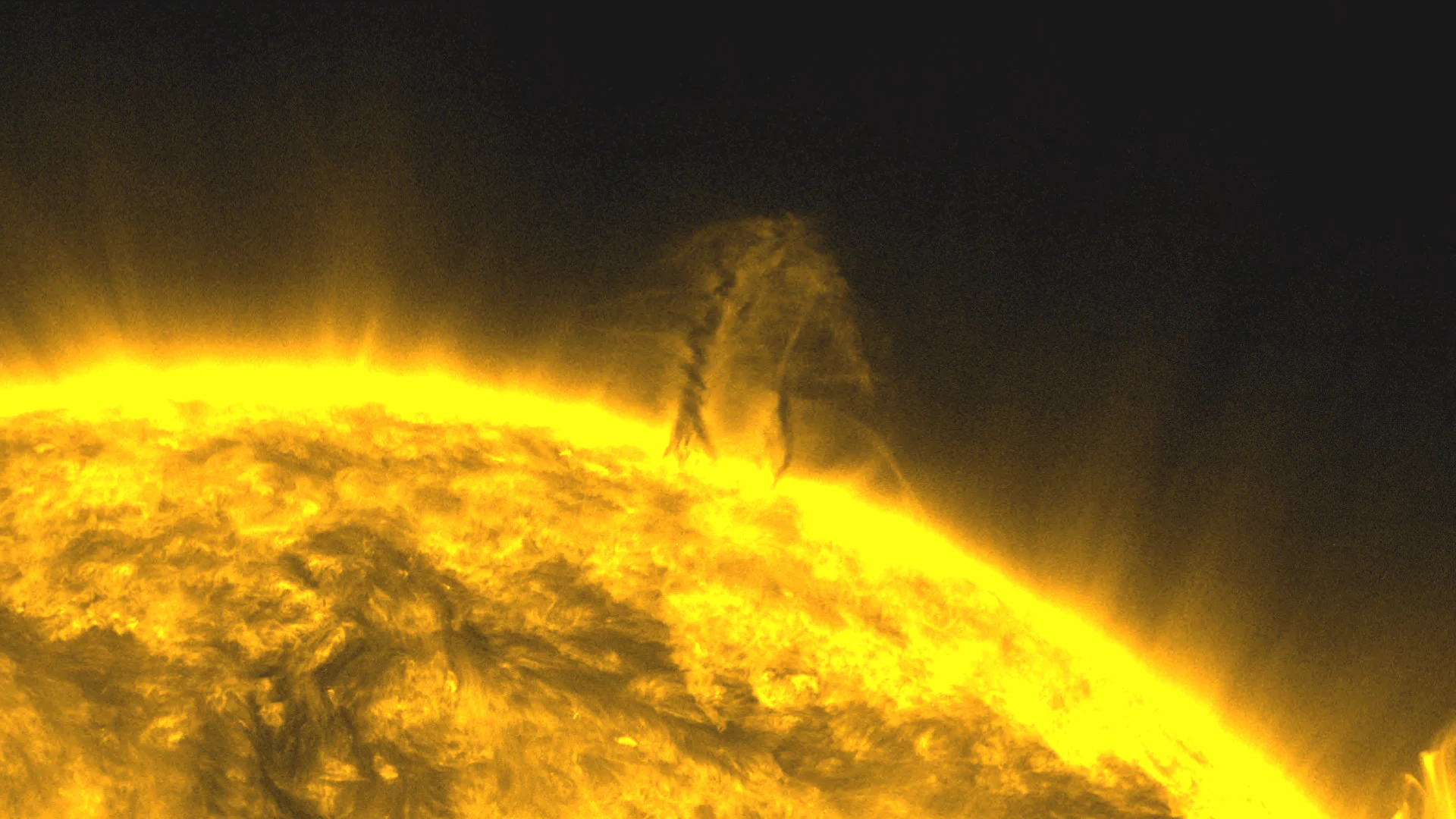
NASA spotted a massive magnetic tornado swirling on the Sun
Scott Sutherland Meteorologist/Science Writer
Published on Mar. 21, 2023
We've seen some very interesting activity near the Sun's north pole lately.
First there was the immense polar vortex that fascinated solar and space weather scientists in early February. Now, NASA's Solar Dynamics Observatory spied a massive solar tornado, over 10 times taller than the Earth!
From the views captured by NASA SDO, this tornado spun up late in the day on March 14 and persisted until early on March 18.
Solar 'prominences' like this form due to powerful magnetic field lines that extend out from the surface of the Sun. Electrically charged solar plasma, which is made up of superheated hydrogen and helium gas, is pulled upwards away from the surface by the magnetic field, where it swirls around the field lines in this tornado-like way. We often see these in the form of "coronal loops"
While the prominence does appear very much like a twister we'd see during severe weather on Earth, it is very likely a full arch of material, streaming out from the surface along a magnetic field loop and joining back up with the surface somewhere else. The reason it looks like a lone spinning vortex may be due to a trick of perspective, as we could be looking at the arch edge-on.
How the Solar Dynamics Observatory takes images of the Sun could also factor in.
Every 12 seconds, SDO takes a snapshot of the Sun, while rotating through a set of filters. Each filter captures a specific wavelength of extreme ultraviolet light, which also corresponds to a specific temperature of solar material. The set of filters was carefully chosen for SDO so that each singles out a region of the Sun (its surface or a part of its atmosphere) and a particular phenomena (such as solar flares or prominences).
For example, according to NASA, the 171 Angstrom filter, used to capture the images above, is especially good at showing coronal loops — the arcs extending off of the Sun where plasma moves along magnetic field lines. The brightest spots in these images are where the magnetic fields near the surface are exceptionally strong. The characteristic temperature of these images is 1 million degrees Kelvin.
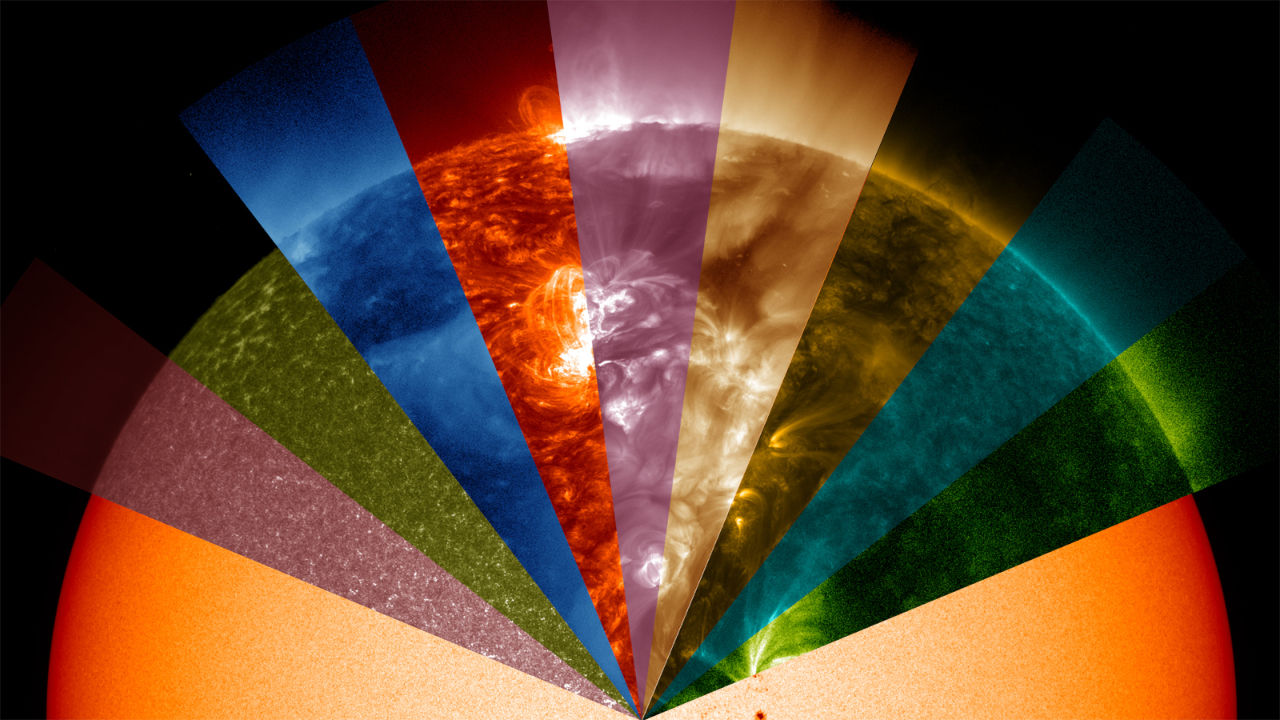
However, if you have a prominence that extends far away from the surface, like this one does, the temperature of the material could change as it flows along the magnetic field line. If so, by looking at just one filtered view, only parts of the prominence would show up, while other parts would disappear or show up in a different filtered view.
So, simply due to a difference in temperature, or perhaps due to the contrast between the hot material and the cold, dark space beyond, the top of the loop may be completely invisible.
According to spaceweather.com, when the solar tornado finally gave out, it produced a coronal mass ejection, or CME, that expanded harmlessly out into space.
"This twister finally overtorqued itself," they wrote on their site. "On March 18th it spun out and hurled a cloud of magnetized gas into space. The unraveling debris is flying up from the sun's North Pole and will not hit Earth."
No comments:
Post a Comment